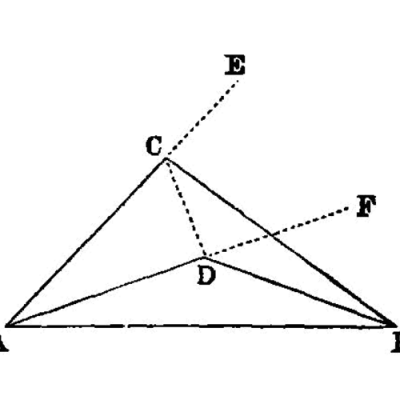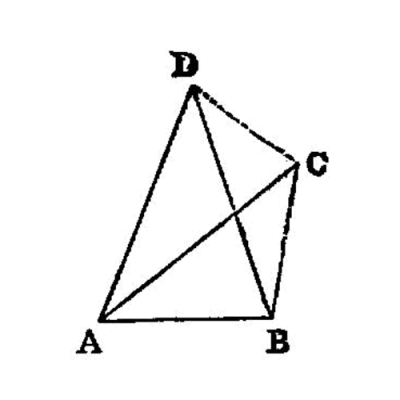Proposition I.7

Given two straight lines constructed on a straight line (from its extremities) and meeting in a point, there cannot be constructed on the same straight line (from its extremities), and on the same side of it, two other straight lines meeting in another point and equal to the former two respectively, namely each to that which has the same extremity with it.
For, if possible, given two straight lines AC, CB constructed on the straight line AB and meeting at the point C, let two other straight lines AD, DB be constructed on the same straight line AB, on the same side of it, meeting in another point D and equal to the former two respectively, namely each to that which has the same extremity with it, so that CA is equal to DA which has the same extremity A with it, and CB to DB which has the same extremity B with it; and let CD be joined.
Then, since AC is equal to AD,
- the angle
ACDis also equal to the angleADC; [I.5] 1 therefore the angleADCis greater than the angleDCB;
therefore the angle CDB is much greater than the angle DCB. 2
Again, since CB is equal to DB,
- the angle
CDBis also equal to the angleDCB.
But it was also proved much greater than it:
- which is impossible.
Therefore etc.
- Q. E. D.
References
Footnotes
-
equal to the angle
It would be natural to insert here the stepbut the angle
↩ACDis greater than the angleBCD. [C.N. 5]. -
much greater
literallygreater by much
(πολλῷ μεἰζων ). Simson and those who follow him translate:much more then is the angle
but the Greek for this would have to beBDCgreater than the angleBCD,πολλῷ (orπολὺ[ρπαρ ] μᾶλλόν ἐστι...μείζων. πολλῷ μᾶλλον , however, though used by Apollonius, is not, apparently, found in Euclid or Archimedes. ↩


